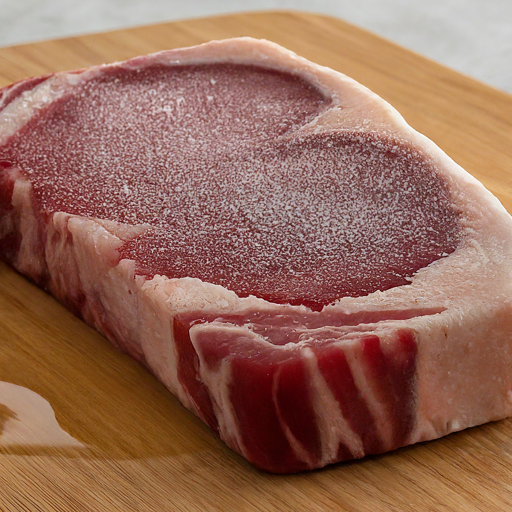Have you ever been staring into the freezer, looking for something to eat and find a frozen food, only to finally let the frozen food defrost naturally on the table? Maybe most of us have been in the situation like this. However, something is wrong with this. No, the problem is not having a frozen food itself. But in the naturally defrost the frozen food in the room temperature. This is a bad practice that cross the protocol of food safety and of course not adhering to the protocol of food hygiene.
The question is, …. why is that? Here’s why:
The Danger Zone
Basic microbiology knowledge will let us know that bacteria can grow rapidly between 40°F (4°C) and 140°F (60°C). These temperature range is aptly nicknamed the “danger zone” due to its property to multiply bacteria easily and rapidly. So, if we leave our food thaw in the room temperature, the surface of the food is basically brought into this state of danger zone. In effect, this will make the food that has a lot of nutrition become a really perfect breeding ground for many harmful bacteria. This includes something like Salmonella, E. coli, and Campylobacter.
But The Food is Still Frozen?
Yes, the food is still frozen, but only in the center. Microscopically the outer layer’s temperature is different. At room temperature the food’s outer layer will be warm even if the center is frozen. The outer surface itself harbor millions of bacteria, just enough (or more than enough) to cause illnesses. To combat this, we can try to cook the food properly, thoroughly, to kill the bacteria. However, these bacteria also produce a lot of toxins. The toxins are still left behind and can cause sickness to our body.
Uneven Thawing
The problem using natural thawing lies on the uneven thawing that happens on the food. While the outside layer may look warm (and teeming with a lot of bacteria), but the inner layer may or may not be still frozen. This will make our brain think that the food is ready to be cooked since the outer part looks warm, while actually in the inner part it’s still not safe and contain a lot of dangerous bacteria.
How To Thaw Safely?
So how we can thaw our food safely, you may ask? Actually, there are some ways we can do it safely, namely:
Refrigerator Thawing: surprisingly the closest part of the freezer is one of the safest ways to thaw our food, yes, it’s the refrigerator. When we put food in the refrigerator, we will increase the temperature of the food gradually and safely throughout the process. This is safer and better way to thaw. However, this method takes a long time, so, you better prepare and schedule it beforehand.
Cold Water Thawing: Another way you can use for quicker thawing is to submerge the food in a leak-proof bag. Then you place the back inside a bowl of cold water. The water will do the Magic of heat transfer and do a quicker thawing. This is faster than refrigerator towing and still maintains a safe temperature. However, there is a caveat, which is you have to change the water every 30 minutes to ensure it remains cold.
Cold Water Thawing: It is a common thing to have microwave that can defrost foods for us. Usually, we can identify a button that can defrost by looking at the icon on the microwave. If your microwave has it, then obviously you can use the button to tau the food inside your microwave. This is convenient. However, there is a slight risk of And even cooking. What do you mean is this can make a part of the food well cooked, while the other part still frozen. still frozen.
Prevention is Key
Whatever method of thawing that you use, you have to keep in mind that preventing foodborne illnesses starts with a safe food hygiene and food handling practices. And one of the important parts of it is to offer towing food at room temperature and choose a safer methods as described above. And remember that correct thawing method will result in delicious and safe meals.


